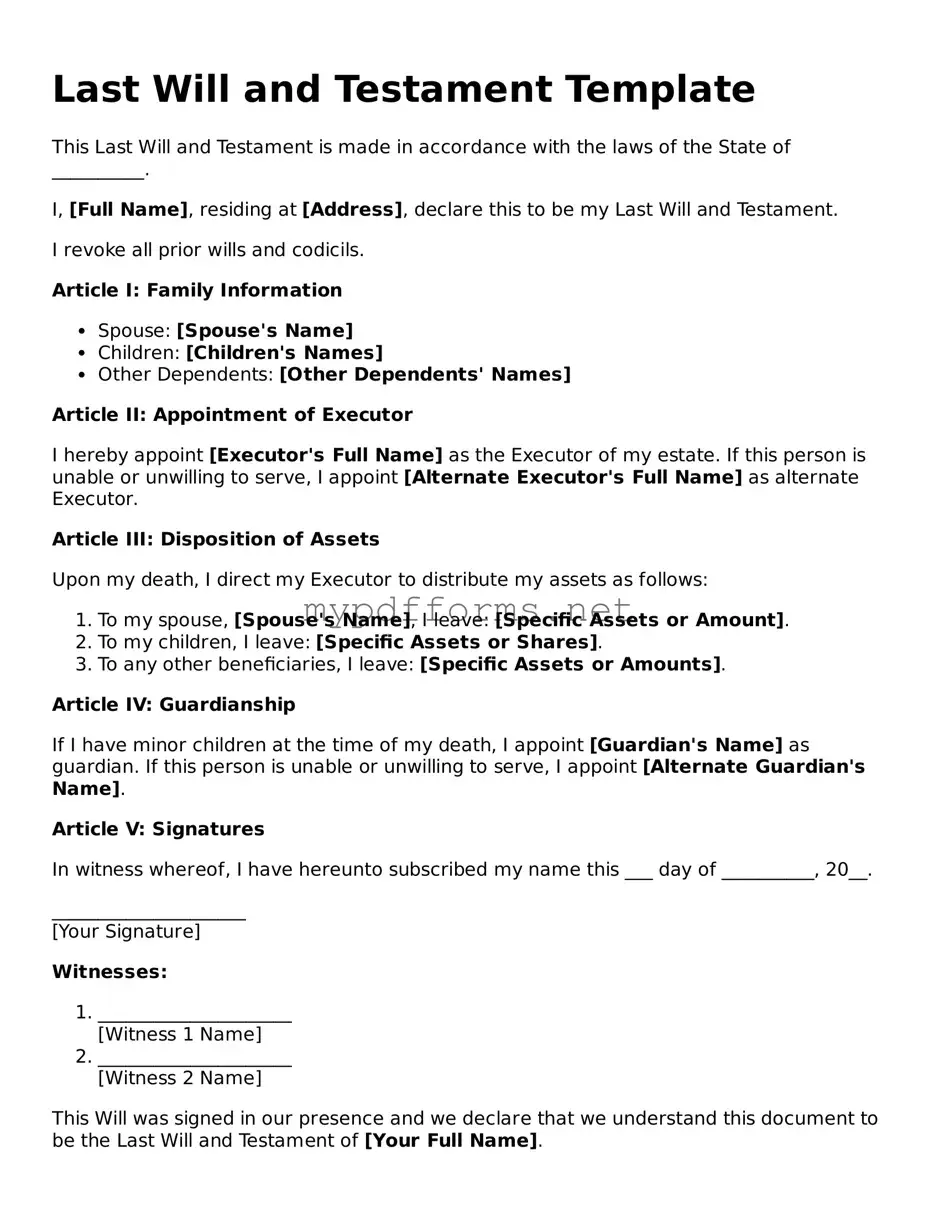A living will is a document that outlines an individual's preferences regarding medical treatment in case they become unable to communicate their wishes. Similar to a Last Will and Testament, a living will provides clarity about a person's desires. However, while a Last Will deals with the distribution of assets after death, a living will focuses on healthcare decisions during a person's lifetime. Both documents serve to ensure that an individual's preferences are respected.
A trust is another legal document that can be compared to a Last Will and Testament. A trust allows a person to manage their assets during their lifetime and designate how those assets will be distributed after their death. Unlike a will, which goes through probate, a trust can help avoid this process, making asset distribution quicker and potentially more private. Both documents are designed to manage an individual's estate, but they operate in different ways.
A power of attorney grants someone the authority to make decisions on behalf of another person, particularly in financial or legal matters. This document is similar to a Last Will and Testament in that it involves the management of an individual's affairs. However, a power of attorney is effective during a person's lifetime, while a will only takes effect upon death. Both documents require careful consideration of whom to trust with important decisions.
An advance directive is a document that provides instructions about medical care preferences in situations where an individual cannot express their wishes. Like a living will, an advance directive focuses on healthcare decisions. Both documents aim to ensure that a person's choices regarding medical treatment are honored. They differ in that an advance directive may include provisions for appointing a healthcare proxy, while a living will strictly outlines medical preferences.
A codicil is a legal document that serves to amend an existing Last Will and Testament. It allows individuals to make changes without creating an entirely new will. Similar to a will, a codicil must meet certain legal requirements to be valid. Both documents are used to express a person's wishes regarding their estate, but a codicil specifically modifies an existing will rather than establishing new directives.
A declaration of trust is a document that outlines the terms of a trust and the responsibilities of the trustee. Similar to a Last Will and Testament, it specifies how assets should be managed and distributed. While a will addresses the distribution of assets after death, a declaration of trust can be used to manage assets during a person's lifetime. Both documents require careful planning to ensure that an individual's wishes are carried out effectively.
For those seeking to confirm employment history and status in California, the California Employment Verification form is a vital tool to ensure compliance with state regulations. This streamlined process benefits both employers and employees, allowing for efficient verification. To access the necessary documentation, you can check out Top Document Templates for further assistance.
A beneficiary designation form allows individuals to name who will receive certain assets, such as life insurance policies or retirement accounts, upon their death. This document is similar to a Last Will and Testament in that it determines the distribution of assets. However, beneficiary designations often take precedence over a will, meaning that assets designated to a beneficiary will not be included in the probate process. Both documents are essential for estate planning.
A joint will is a single will created by two individuals, typically spouses, that outlines how their assets will be distributed upon the death of either party. This document is similar to a Last Will and Testament, as it serves to express the wishes of both individuals regarding their estate. However, joint wills can be more complex, as they often include provisions that may restrict changes after one party passes away. Both documents aim to provide clarity in estate distribution.
A letter of instruction is an informal document that provides guidance to loved ones regarding personal wishes and preferences after death. While it is not a legally binding document like a Last Will and Testament, it can complement a will by offering additional context. Both documents serve to communicate an individual's desires, but a letter of instruction is typically more personal and less formal, focusing on non-legal matters.
A family trust is a type of trust established to benefit family members. Similar to a Last Will and Testament, it outlines how assets will be managed and distributed. A family trust can provide ongoing support to beneficiaries during their lifetime, while a will typically addresses distribution upon death. Both documents are important for managing family assets and ensuring that an individual's intentions are honored.
